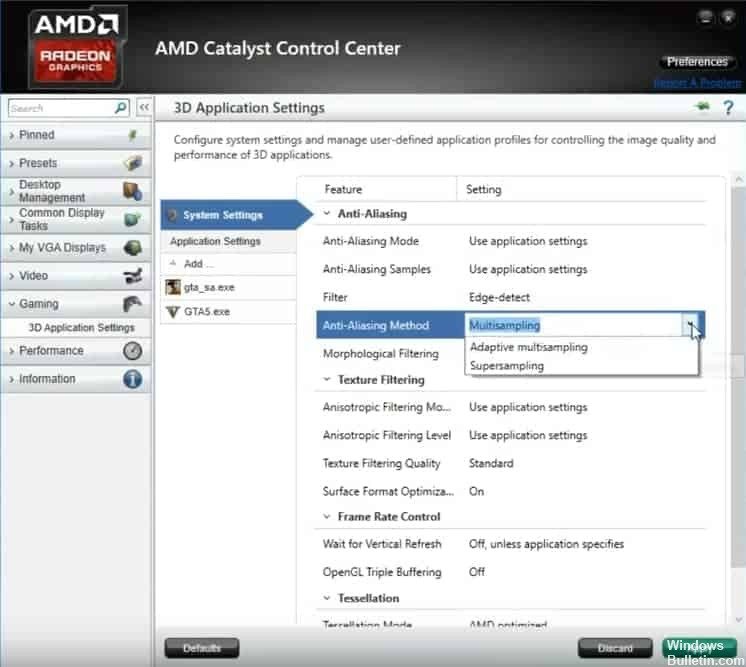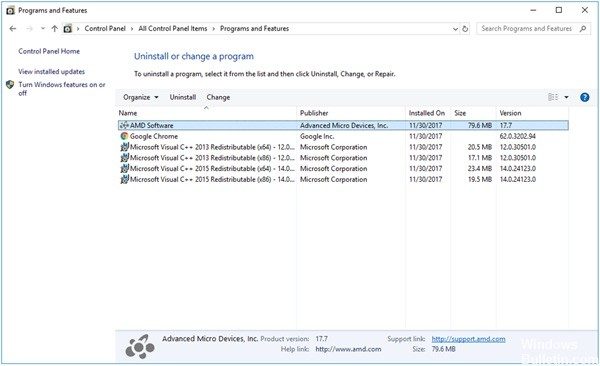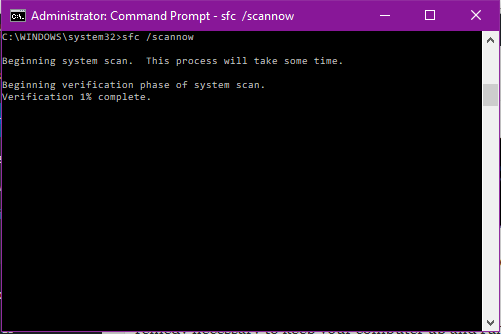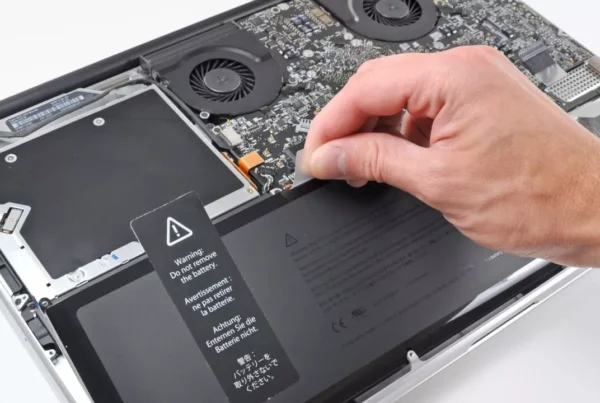RECOMMENDED: Click here to fix Windows errors and get the most out of your system performance
If you own a Windows computer with an AMD Radeon GPU, it's unlikely that you'll be happy with the way the company has built its Catalyst control center. Now the company says it's selling Catalyst in favor of a new driver and video configuration system called Radeon Software.
AMD Catalyst Control Center is a component of the AMD Catalyst software engine. This program provides video customization options to change display settings, display profiles, and overall video performance.
Many people still use the AMD Catalyst control center. Below we describe how to uninstall it, what to do when it's missing components, what to do when it won't open, and some tips for gamers to improve (or overclock) their computer graphics.
Uninstalling and reinstalling the AMD Catalyst Control Center application
No matter who you know AMD Radeon Catalyst Control can't open or AMD Catalyst is missing or won't start, you can try to uninstall Catalyst Control Center in Control Panel and then reinstall it in Windows 10.
If the new AMD Catalyst Control Center can be successfully opened and started as usual, the Catalyst Control Center malfunction will definitely be caused by the AMD Catalyst app in Windows 10.
- Open Control Panel.
- In Control Panel, try to display by category and under Programs, look for a program to uninstall.
- Then, in the Programs and Features window, locate and right-click on the AMD Catalyst Control Center application to uninstall it.
- Restart your computer for it to take effect.
When your computer restarts, go to the official AMD web portal to download the AMD Control Center app for Windows 10.
Removal of certain policies
This is another solution where you require downloading the latest version from AMD. drivers. If you've followed the steps in answer 1, you should already have them on your computer. If not, be sure to download it and keep the installation file on your computer. This method has worked for many users.
Windows 10:
- Use the Windows Key + I Key combination to open Settings. You can also click the Start Menu button and click the speed icon in the lower left corner of the Start menu to open Settings.
- A list of all installed programs should appear immediately, so be sure to look for the AMD Software entry in the list. Left-click and click the Uninstall button that appears. Follow the instructions on the screen.
Other versions of Windows:
- Open the Start menu and type “Control Panel”. Click on the first result that appears. You can also use the Windows Key + R key combination, type “control.exe” in the box, and then click OK.
- Whatever the case, click the View by option and change it to Category. Be sure to choose Uninstall a program in the Programs section.
Update your AMD graphics card driver.
You can update AMD video card driver manually or automatically.
Go to your official AMD web portal, then search for the latest correct driver for your video card. Be sure to only choose a driver that is compatible with your Windows.
Run SFC scan
Windows 10 includes a self-test tool that enables you to automatically detect and repair damaged files. Run a system file checker to check if system files are damaged or missing and if they are repairable.
- Go to Start > type cmd > right-click on Command Prompt > Run Command Prompt as administrator.
- Type sfc /scannow, then press Enter.
- Wait until the scan is complete and restart your computer.
- Restart AMD Catalyst Control Center.
https://community.amd.com/thread/184550
RECOMMENDED: Click here to fix Windows errors and get the most out of your system performance









